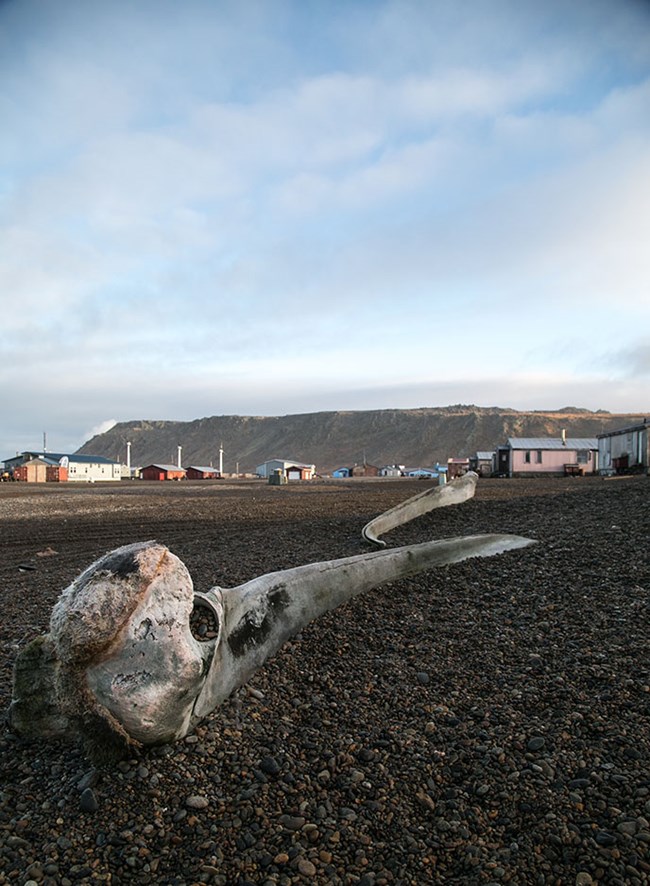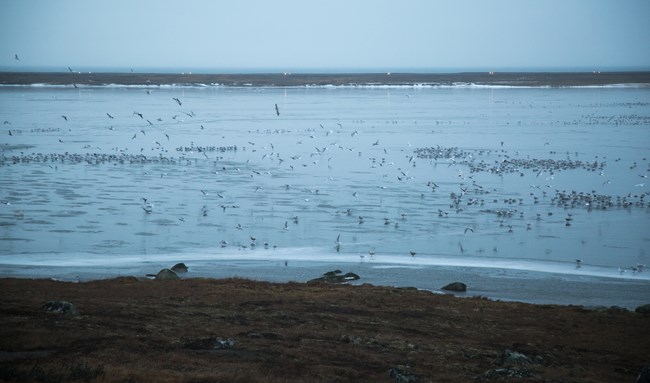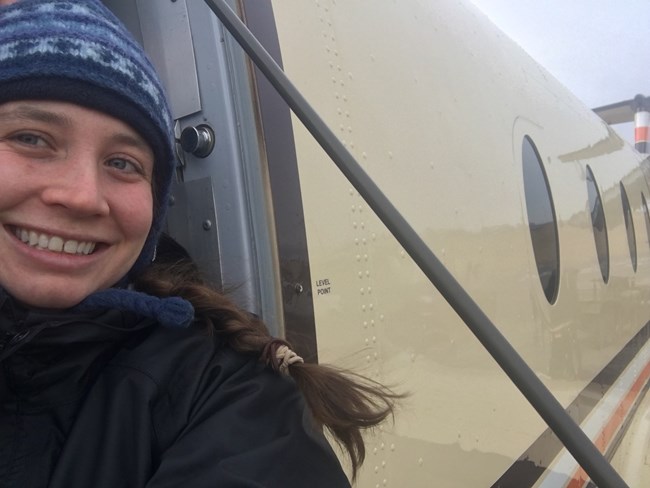Last updated: January 30, 2018
Article
Travels in Remote Alaska Lead to More Remote Travels
Wind
The November wind pushed against my body with a wall of force. Black bunny boots, black snow pants, black parka, I felt very cognizant of my gear for it was the only thing protecting me from the sting of the powerful weather. Walking down the path, camera clutched at my side, neck gator pulled up to my eyelashes, I truly felt my presence on this Earth. I trudged through blowing air on the rocky surface of St. Lawrence Island, once a mountaintop on the Bering Land Bridge. St. Lawrence Island now pokes through the Bering Sea, with wild waves breaking against the black coarse beach.

Google Maps
“Hello?”
“I would like to make a flight reservation please.”
“Okay, from where to where?”
“Nome to Gambell please.”
I felt my body tingle with excitement as I hung up the phone with Bering Air. Being an intern with the Student Conservation Association (SCA) has truly opened doors to new experiences and perspectives, allowing me to travel, take pictures, and participate in a new way of life. During this time, I've been able to provide environmental education through public outreach and digital products. Often capturing some of nature's most elusive moments, such as a spawning salmon's final breaths.
I am fortunate for the amount of traveling I have done during my 25 years on this Earth. When preparing for a trip, there comes a time when I feel overwhelmed and wish to stay home. The idea of launching myself into the unknown becomes slightly overwhelming, mostly due to time-consuming preparation. There was laundry to do, meals to make, education lessons to prepare and materials to pack. My entire weekend was dedicated to work. Monday morning, the zippers were zipped and the Pelican cases latched, as I followed the pilot to the plane. The challenges from the weekend had paid off.

NPS Photo: Lia Nydes
ATVS zoomed up to the plane. Siberian Yupik bounced though the crisp air. A husky was loaded onto the plane. A girl asked if the dog was mine, to which I replied, “I think the dog is going to Nome…”

NPS Photo: Lia Nydes
When the day was done and the students went home, I took off my education cap and engulfed myself in my surroundings as seen through my Canon5D mark 3 with its 24-105mm lens.
Dressed in layers, I opened the school door. The wind hit me with tantalizing force. Invigorated, I stepped outside, for sometimes, in Alaska, just walking out the front door is an adventure. I walked through the wind to explore a new coastal area. The wind was gusting up to 65 miles per hour. At times, I would simply give in and allow the wind to push me around. I tried to walk in the middle of the dirt trail, only to be scooted off to one side again. The dirt road laid out perfectly flat. Houses sat to my left and right as the ATVS zoomed by; I felt I was in the middle of a race.

NPS Photo: Lia Nydes

NPS photo: Lia Nydes
As I looked through the view finder, focused my shot and pressed the shutter down, the rest of the world seemed to dissolve, as all my attention belonged to the scene in front of me. I created a photograph and then moved my position, waiting to see an intriguing composition. At times, it’s as if the beauty and possibilities of the composition takes over me and I fall to my knees, distorting my body, lying flat on the ground. I seem to forget about the wind or the cold, my hands could be freezing, but I will not notice until after the shooting has commenced. It’s a powerful connection between my body, and the landscape, the camera is my passageway to understanding and connecting.
The waves crashed aquamarine against the dark sand, I attempted to create a few pictures of the roughness of the ocean, but after a while, thought of a quote from one of my favorite photographers, Paul Nicklen, “Sometimes the best photographs I take are with my eyes.”

NPS Photo: Lia Nydes
Bering Air landed, people speaking Siberian Yupik walked up to the plane, a woman held her baby in a pink blanket, the arrivals unloaded – a few of them looking like me, newcomers, perhaps only to stay a few days. I could not help but feel they were taking my place as the new white people coming to Gambell.
There are moments when I feel extremely present because my surroundings are so unique, beautiful and fascinating. To experience a new culture is to gain a soul.

NPS Photo
